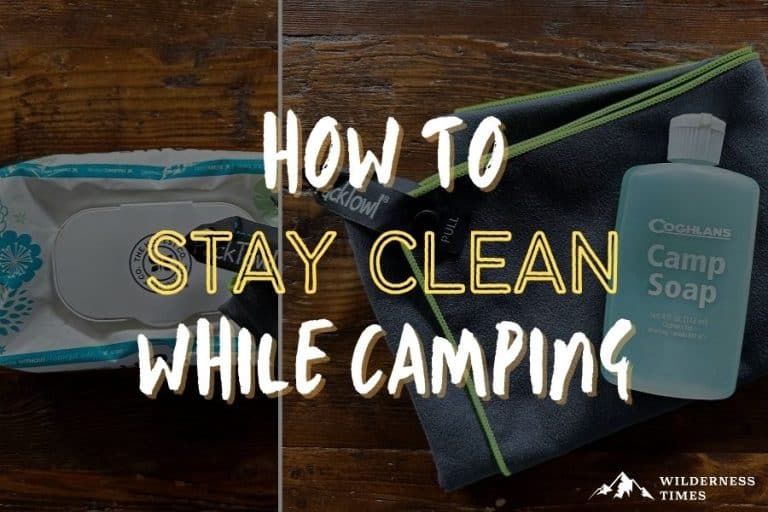Ever been on a camping trip and found yourself feeling stinky and sweaty? It can really take away from the fun. You love the outdoors, but turning into a “wild boar” isn’t exactly the vibe you’re going for.
Don’t worry—I’ve got you covered! In this guide, you’ll learn everything you need to know to stay fresh, clean, and ready to enjoy every moment of your camping trip.
So, grab your gear, and let’s dive in. Ready? Let’s get clean!
Camping Hygiene Gear Checklist
First things first – to stay sparkly clean while camping, you NEED to prepare at home.
That means packing the right kind of personal hygiene supplies. From baby wipes to trowels, I got you covered.
Baby Wipes
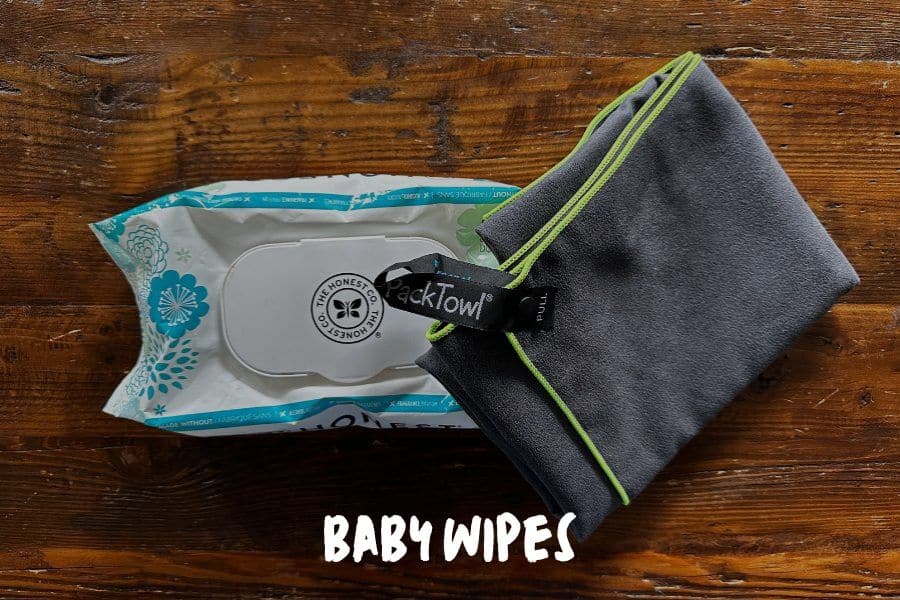
Baby wipes are the MVP of camping hygiene. They clean everything—from dirty hands to muddy boots—and can even double as a quick way to freshen up when you don’t have access to water.
Greasy fingers after snacking on the go? Nothing a baby wipe won’t fix.
However, they are especially great to use while camping and hiking. If you aren’t near a lake or a river, they’ll help keep your hands and face clean.
Also, they can be used to bathe yourself, but I’ll say more about that later.
Pro tip: Opt for unscented wipes to avoid attracting curious wildlife. Just remember, EVEN if they’re biodegradable they can be disruptive to local ecosystems, so pack them out in a ziplock bag for proper disposal later.
Hand Sanitizer
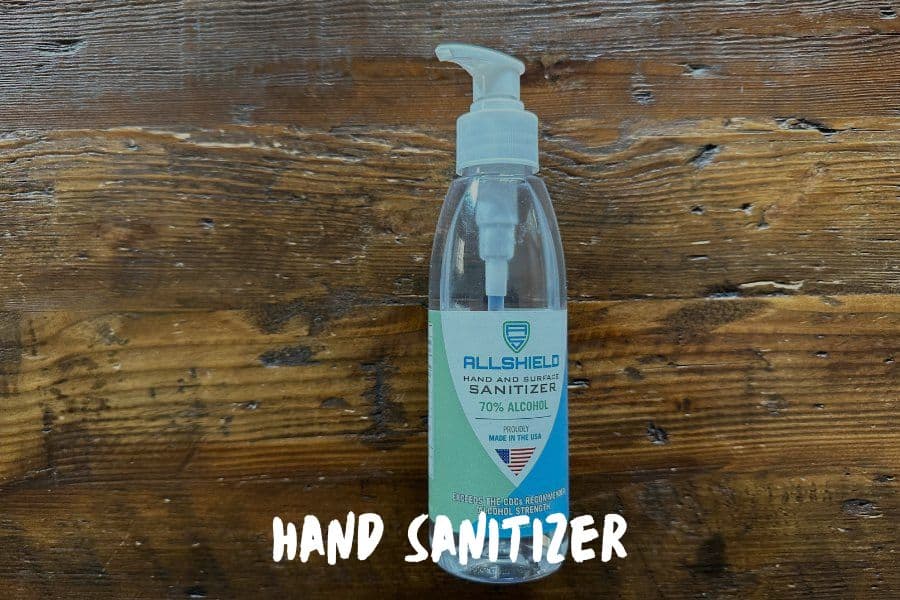
No wipes? No problem!
Hand sanitizer is the ultimate germ-fighter. Choose an alcohol-based, unscented variety for maximum effectiveness and wildlife safety.
However, while hand sanitizer is a great tool for sanitizing in the absence of water, it can’t replace the need for physical cleaning when you’re dirty.
Toilet Paper
Toilet paper isn’t just for bathroom breaks—it’s a versatile camping tool.
Use it to hold greasy food, clean surfaces, or even mark your path (just be sure to collect it on your way back). Biodegradable TP like Coghlan’s is a must for eco-conscious campers.
But respect the Leave No Trace initiative! Even biodegradable toilet paper should never be buried in the wild—it should always be packed out.
Biodegradable Soap
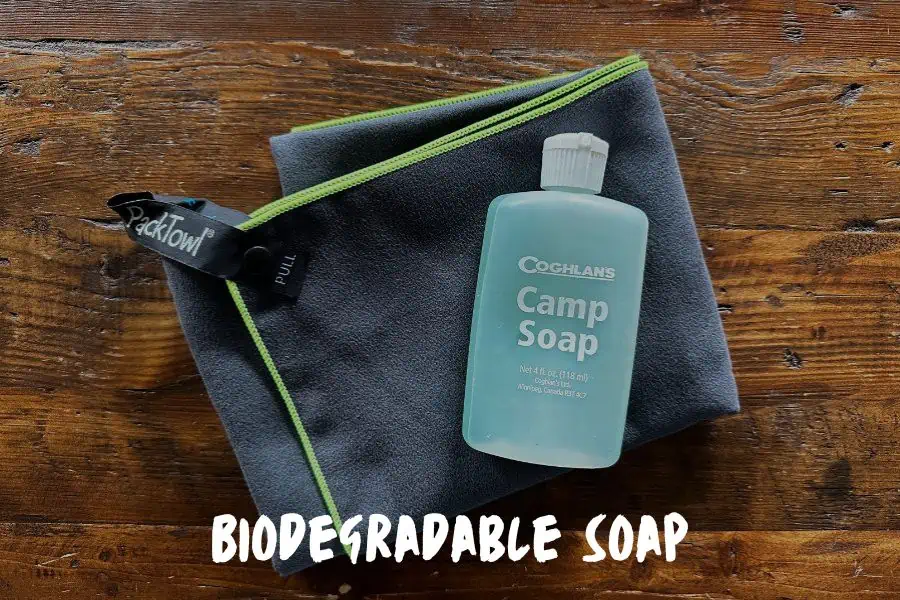
Soap has many uses!
Need to clean the dishes? Use your soap.
Shower time? Use your soap.
Sweaty and dirty clothes that smell like campfire smoke and need washing? Soap soap soap.
But make sure it’s biodegradable so you don’t harm your surroundings when using it. Coghlan’s camp soap comes in clutch.
Note: While biodegradable soap is a better option than regular soap, it should still be used with care. Use it at least 200 feet from any water source to wash dishes or body parts. Ensure that all wastewater is caught in a container (like a tub), which will then need to be disposed of properly.
Toothbrush, Toothpaste & Floss
Just because you are camping doesn’t mean you should neglect your oral hygiene.
Again, you don’t want to harm nature so when buying toothpaste, make sure it’s an all-natural one.
Floss is optional. However, after using it, your teeth will feel as if they have been to a high-end spa. So, why not give them that treat?
Quick Drying Microfiber Towel
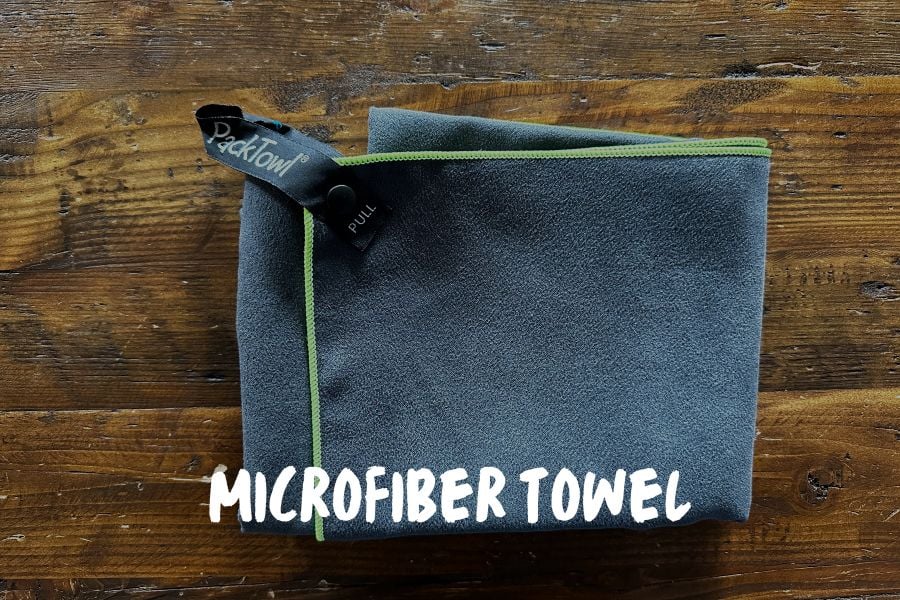
A quick-drying microfiber towel is a next-level item to have with you while camping.
These lightweight, compact towels are great for drying off after a swim or shower.
If they get dirty, just boil them, rinse with soap, and they’re good as new.
Trowel
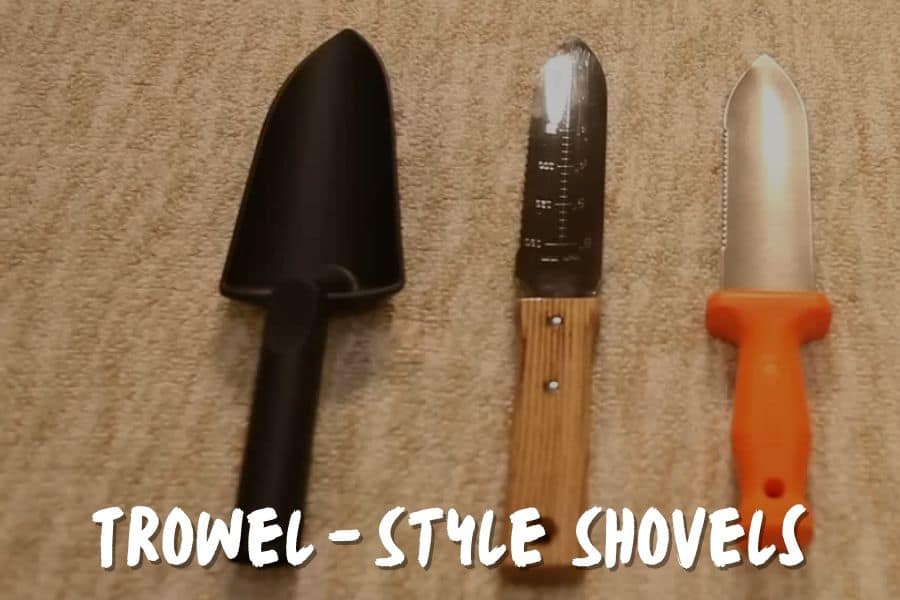
You might be wondering why you would need a trowel with you.
Following Leave No Trace principles, you’ll need to dig a hole when you go to the bathroom out in the wild.
So, if you’re wild camping, at some point on your trip, you’ll need a digging tool. You don’t want to dig a 6-8 inch hole with your hands.
Why do I need to dig a 6-8 inch hole? (I hear you asking)
You’ll find out below in the Nature Calls section, where I’ll explain the entire procedure in greater detail.
Ziplock Bags
Ziplock and garbage bags are essential items to bring on your trip.
They’ll serve as a home for your dirty baby wipes and used toilet paper, as well as any other waste you need a place to stash.
The best thing to do with used toilet paper is to place it in a small plastic bag, tie it securely, and then place it in your zip bag.
Choose opaque bags if you’d rather not see what’s inside!
Garbage bags can also be used as portable washing machines for your clothes, but more on that later.
Sanitary Products
You don’t want to be caught bleeding and unprepared for it!
There are reusable and disposable products that’ll help you when the bloodbath starts.
Reusable products are things like period-proof underwear and menstrual cups.
Disposable products are things like traditional pads, tampons, and even toilet paper.
Be sure to check out this article on handling your period in the outdoors, and disposing properly of sanitary products.
Bathing While Camping
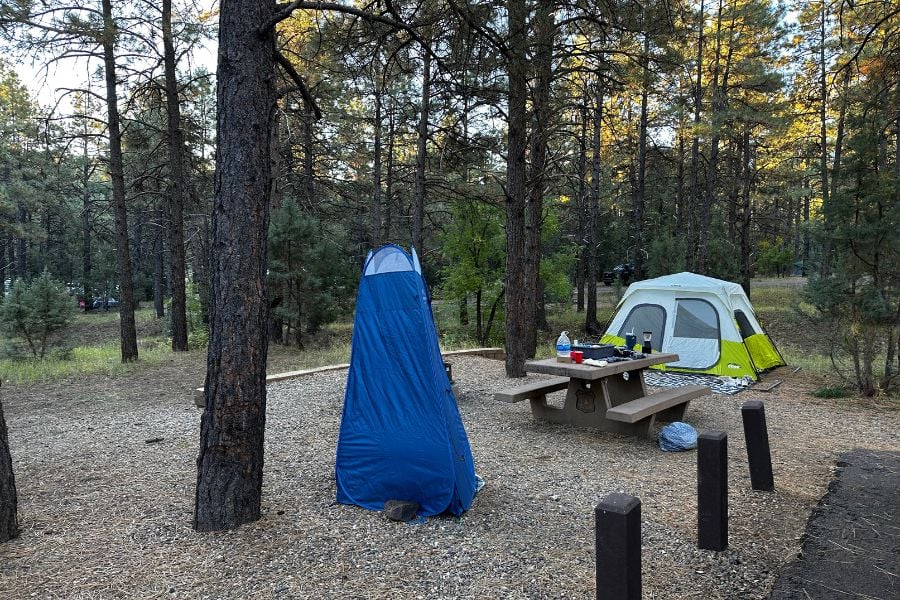
You might get dirty, sweaty, and stinky on your camping trip.
Yes, it can feel like you are one with nature. It might even feel kind of sexy. But NO. You don’t need to stay smelly!
Let’s go through some different ways of bathing in nature and keeping yourself fresh and clean.
But first, any/all washing, including soap use, should be done 200 feet away from water sources.
Swimming In Lakes & Rivers

A dip in a natural water source is an easy way to clean off.
But please avoid using soap, even biodegradable, as it can harm the ecosystem.
Baby Wipes Bath
For a water-free clean, baby wipes are a lifesaver.
Wipe down your face, armpits, and other areas, then pack the used wipes for proper disposal.
Portable Showers
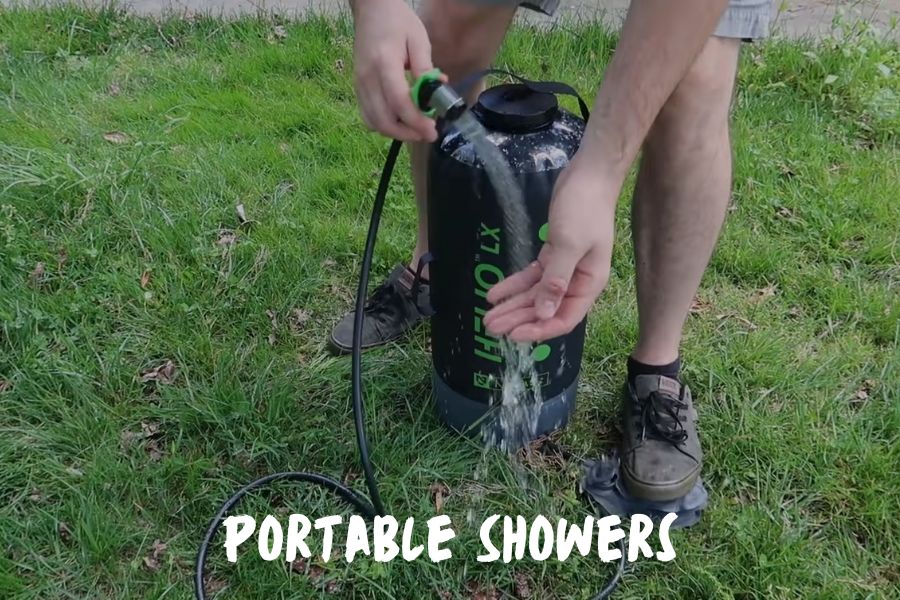
For a more luxurious option, bring a portable camping shower. These shower bags use heat from the sun to give you free hot water while you’re backcountry camping.
We also recommend that you also get a camping shower tent that you can use for a bit of extra privacy.
Established Campgrounds Showers
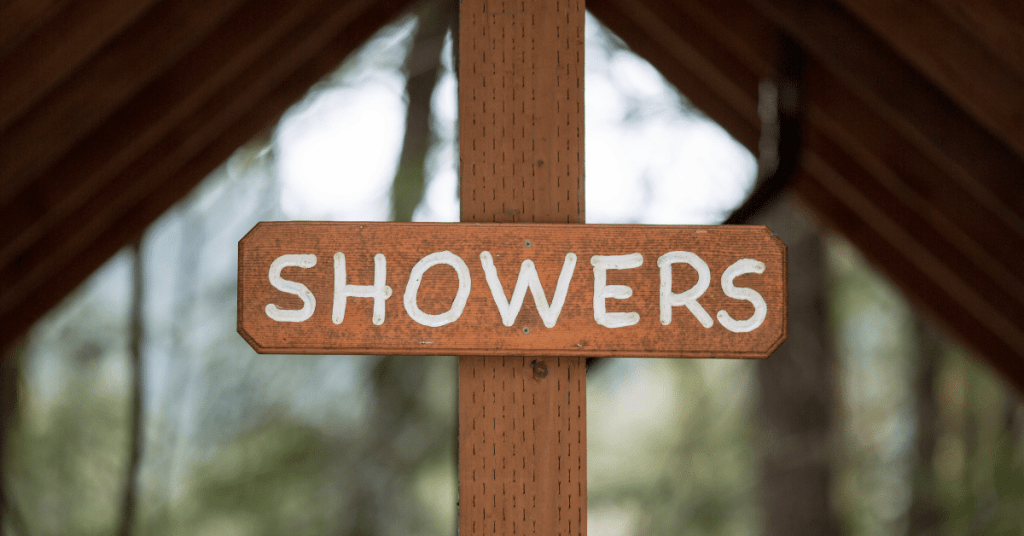
If you’re near a campground, take advantage of its facilities.
A proper shower will feel like pure bliss after days in the wild.
Just be prepared to pay a small fee for day use if you aren’t already paying to camp at the campground.
When Nature Calls
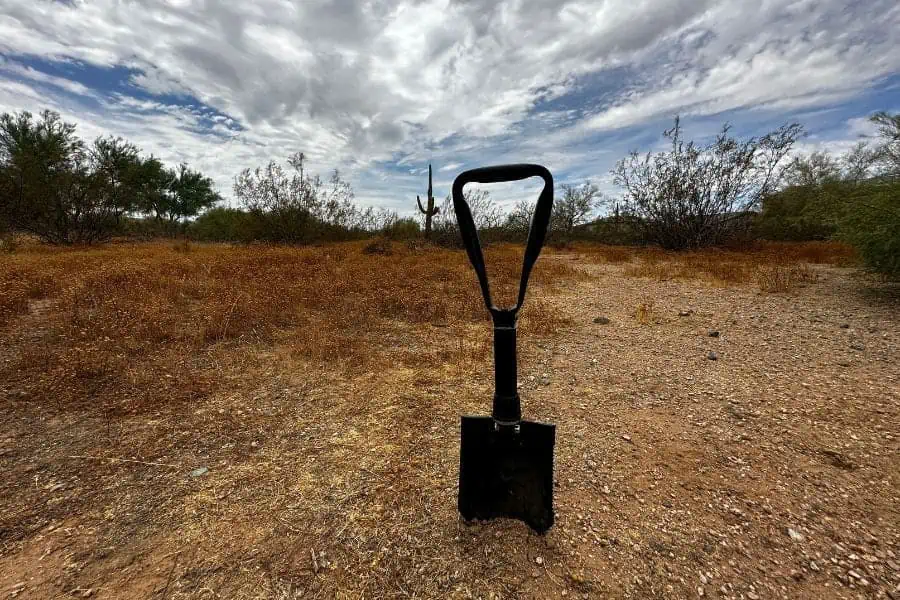
When nature calls, here’s what to do:
- Peeing: Go at least 150 feet away from camp and water sources to avoid attracting wildlife.
- Pooping: Dig a 6-8 inch deep hole using your trowel, do your business, and cover it back up. Pack out your used toilet paper in a zip bag to leave no trace.
Bears are attracted to the scent of human urine. So, you don’t want an unexpected visit.
For number 2, there’s a bit of work you should do. Remember that trowel that I said you should take with you?
Dig a 6-8 inch deep hole in the ground with it. Near a tree is ideal so that you can use it to keep your balance while doing your business.
Pop a squat over the hole you dug and bombs away!
When you are done, backfill the hole. No, wait. Rewind.
Wipe yourself first, put your underwear and whatever else you’re wearing back on. Dispose of the wipes or toilet paper you used in a plastic bag and then in a zip bag. Then, backfill the hole you made.
Outdoor Laundromat: Keeping Your Clothes Fresh
Keeping your clothes clean on a camping or hiking trip can be challenging, but it’s important to do so responsibly to protect the environment. Here’s how to manage laundry in the great outdoors:
1. Pack Smart to Reduce Laundry Needs
Opt for moisture-wicking, quick-drying, and odor-resistant clothing designed for outdoor use.
Items made from merino wool or synthetic materials are excellent choices, as they reduce the frequency of washes needed and dry quickly if you do wash them.
2. Rinse Clothes Without Soap
If your clothes are only dusty or sweaty, simply rinse them in clean water.
To protect natural water sources, rinse clothes at least 200 feet away from lakes, rivers, or streams. Use a collapsible bucket or bag to fetch water and perform your rinse on land.
3. Using Biodegradable Soap Properly
If a deeper clean is required, use a small amount of biodegradable soap.
However, never use soap directly in a water source, even if it’s labeled biodegradable.
Instead, wash your clothes in a portable container or tub at least 200 feet from any natural water source. Dispose of the soapy water by straining it through a fine mesh or burying it in a 6-8 inch cathole, away from trails and campsites
3. Drying Your Clothes
Hang your clothes to dry using a portable clothesline or a sturdy tree branch.
Avoid using trees with sensitive bark that could be damaged by clothespins or rope.
If possible, choose a sunny spot with good airflow to speed up drying time.
4. Pack Out Wastewater and Contaminants
If you’re washing heavily soiled items or items with grease, and you aren’t at an established campground with somewhere to properly dispose of wastewater, consider packing the wastewater out in a sealed container to avoid contaminating the environment.
By following these steps, you can keep your clothes fresh while minimizing your impact on the environment.
Remember, Leave No Trace principles are essential when doing laundry outdoors—protecting nature ensures that everyone can enjoy it for years to come.
Let’s Wrap It Up
Wow, that was a lot to cover, but hopefully, it’s given you a few good ideas about how to stay clean outdoors.
Be sure to plan and prepare well before heading out on your trip.
Ditch the idea that you have to stay stinky on your trip.
Maintain your personal hygiene, and make sure all the products you bring with you are biodegradable and all-natural.
Preserve nature and support the Leave No Trace initiative with the knowledge you gained here.
Go now and have a clean fresh fun time on your camping trip!


